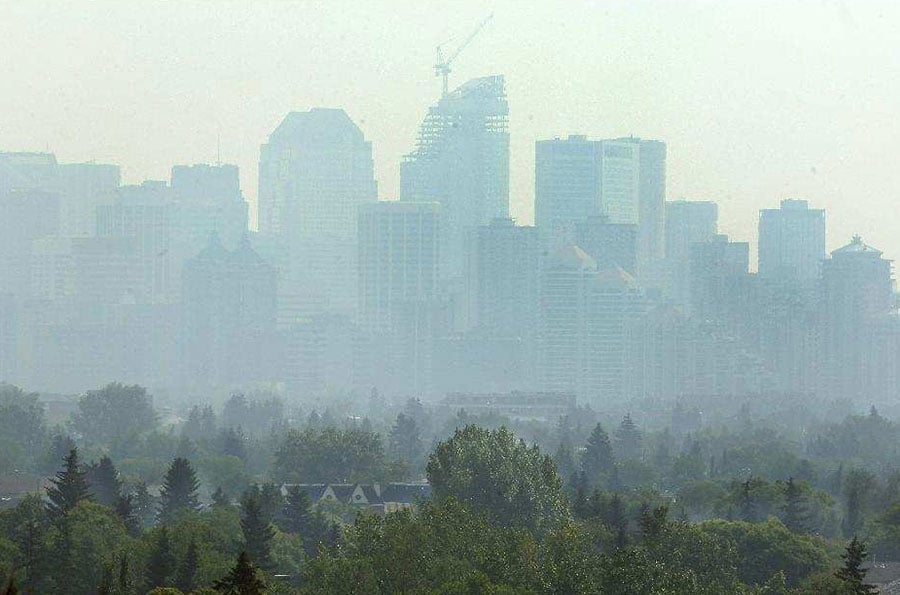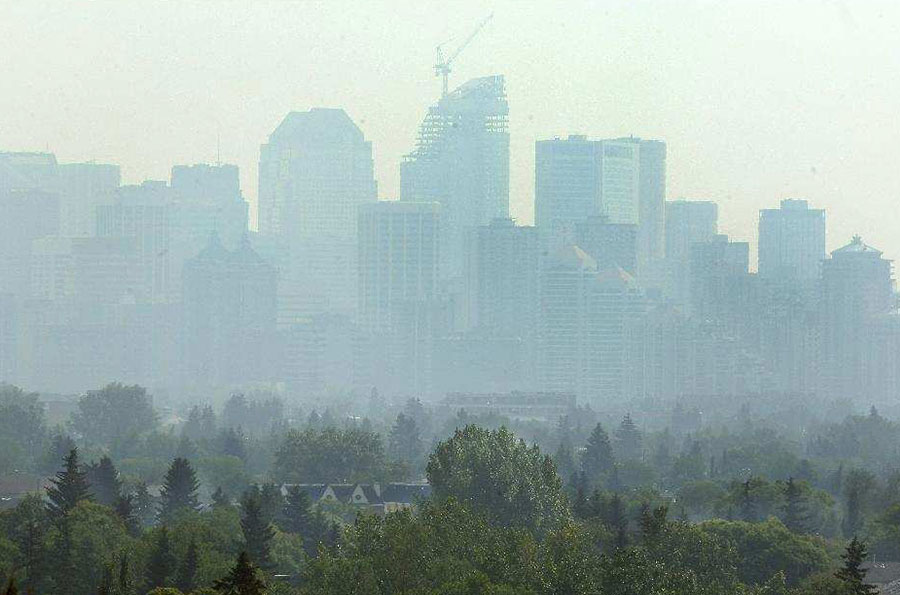
Written By: Corey McCloskey, Customer Response Team Representative
The August long weekend has come and gone, the chaos of springtime responsibility a fast-fading memory. Judging by my Deerfoot Trail commutes this week, Calgarians have fled for the exits in droves, destined for life at the lake, summer camp, or lazy road trips across our fine country. We dream all winter of hot days chalk full of fun in the sun, followed by long evenings lounging by the fire, accompanied by the charming aroma of smoldering fir…
And then you woke up Monday morning but the smell remains! Forest fires rage on the other side of the BC/Alberta border, and a shift in winds have directed the airborne aftermath into our immediate atmosphere. Bambi taught us that after a great fire, life shall begin anew (and allows the otherwise kind of depressing 1942 classic to end on a positive note), thus completing the circle. While fires are critical to the sustainability of a forest ecosystem, they cause a myriad of first-world problems for many, and some legitimately life-altering ones for others.
Here in Calgary, we’re subjected to the blotting out of an otherwise glorious, sunny summer day, an AQI (air quality index) comparable to an average day in Beijing (wrap your head around that!), and perpetually smelling like you had to move your chair at the campfire a half-dozen times because the smoke kept following you around. As is generally the case, we’re completely at the mercy of Mother Nature, but there are a few things you can do to help prevent your Cedarglen home from smelling like your last s’more session!


Smoke getting you down? Just another day in Beijing!
Last summer on this very soapbox, I went over some strategies for keeping your home cool(er) during the day, and a whole lot of that applies here, so I won’t waste your time re-hashing it. If you’re part of the statistical demographic who tends to not actually, you know, read an entire email or article, it basically outlines how to manage the exchange of air in your home; the irony here, of course, is that if you couldn’t bring yourself to finish the last one, you probably didn’t get this far here. Congratulations and a big thank you to those of you who made it!
The key to avoiding an airborne irritant, such as forest fire smoke, is…well, avoidance. If you use a weather app, you’ve probably seen the “Special Air Quality Statements” issued by Environment Canada recently, which contain information on the affected regions, source and duration of the issue, possible health-related symptoms and those who are at the greatest risk, and how best to avoid them. For the very young, elderly, or ill, the best bet is to stay inside and take it easy.
Traditionally, you hear Cedarglen representatives preaching about the importance of air exchanges. We build our houses too “tight” to breathe on their own, so we sing the praises of running your HRV, opening windows, and running fans. Problem is, that’s all predicated on an assumption that the air you’re bringing into home is an improvement over the air you’re kicking back out! How are you supposed to avoid the smoke when your home is breathing it in constantly?
First things first: read my last blog! When you’re done that, disregard everything I said about turning on your fans and opening your windows at night. Leave your place buttoned up tighter than Fort Knox until the wind shifts again. If you find yourself waging an existential battle in your mind between too smoky to breathe and too hot to sleep, I’d suggest you’re better off rolling out a cot in the basement than sleeping with a dust mask on.
You’ve been diligently changing your furnace filter every 1-3 months, right? (over/under is set at 1, as in once this year) You might want to move the timeframe up on that and do it this weekend. If you or your loved ones are susceptible to respiratory irritation or illness, consider buying a pack of cheap filters and changing them as often as needed. Even after the fires are out, whatever is stuck to your filter will remain and, if you’ve ever been appalled by how much dead skin and dust can build up in your furnace filter during a regular maintenance cycle, prepare to have your mind blown. That filter isn’t a magnet, so you are running the risk of re-circulating fine soot particulate throughout your home, even after the skies have cleared.
Pro tip! Murphy’s Law dictates that a furnace fan which has been overworked pulling air through a dirty air filter is GUARANTEED to fail on the coldest night of the winter, which, coincidentally, will also be the night before you have to do something really important in the morning, so save yourself an expensive service trip and a lot of heartache, and change that filter!
If your furnace filter is the dust police for the jurisdiction which is the inside your home, then think of your HRV filters as border patrol services. If your Home Orientation Inspection seems like eons ago, give yourself a free refresher course with our HRV maintenance video on Vimeo. Oh yeah, and don’t be going and throwing those ones out…your HRV filters are forever.
Should I clean my hood fan filter? Bath fan blades? Check and check! Think of it this way: anything that circulates or filters air normally is dealing with its usual workload of airborne particulate PLUS everything currently invading our airspace, and that will take its toll. Being proactive with your maintenance habits will keep your home from missing a beat, which allows you to keep your family safe, comfortable, and not smelling like your camping gear!
Have a great weekend!



